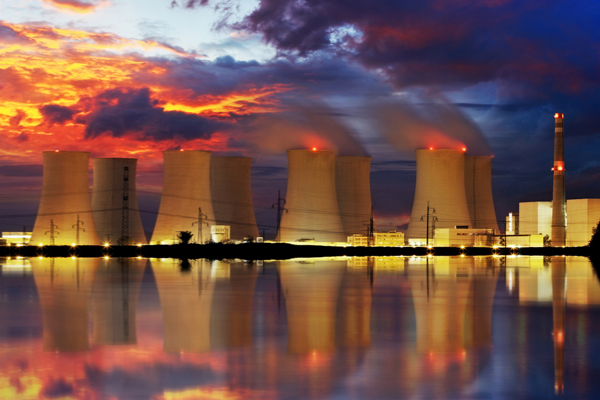Uranium picks up on Asia’s renewed appetite for nuclear energy

Image by TTstudio| Shutterstock.com
Since bottoming out at US$28 a pound in May, uranium prices have climbed 35%, becoming the one commodity that seems to be resisting the broad selloff.
The surge, analysts agree, is due mostly to China’s increased reliance on nuclear energy and renewable energy sources as it moves away from coal-fired plants. But prices are still far from the point that would allow mining activity to pick up again, they warn.
“There’s some movement but I don’t think uranium prices are going to break out of the stalls in near-time,” says Matthew Keane, mining analyst with Argonaut in Perth Australia told Financial Times (subs. required).
“Everyone agrees that today’s prices are too low because you are not incentivizing new supply. The big question is when will prices move higher because there are still significant inventories around since Fukushima,” said John Ellis, investment manager at APAC Resources, told The Wall Street Journal.
Japan and China lead
The market got a big shot in the arm in early November after Japan announced it was finally ready to restart two of its 48 idled reactors, halted since the Fukushima nuclear disaster in March 2011. The move sparked hope of Japan being able to put four more units back online next year. Nuclear power comprised 30% of the country’s power mix before the Fukushima disaster and the country has relied largely on imported gas and coal for power since then, WSJ reports.
Apart from moving away from coal, China is also building as many as 29 nuclear reactors. And nuclear power plants are also being built in the U.S., United Arab Emirates, South Korea and Europe.
But signs of recovery in the sector emerged even before all these, as utilities jumped into the market and bought more uranium. As a result, sellers have been less desperate and are pushing for higher prices.
Shares in uranium miners have not performed as well as the spot price, however. According to Global X Uranium ETF companies focus on the commodity have lost about 25% of their value this year.

Source: IndexMundi.
{{ commodity.name }}
{{ post.title }}
{{ post.date }}




3 Comments
ferris
I hear a lot of optimism in the media about Japan coming back in the market but no figures. My guess is that when the earthquake happened the power stations would have their normal operational stock reserves plus long term contracts (which they have honored). If they have not sold off their stock in hand they may have several
years more uranium than normal.
The US is a little clearer as they received their last uranium delivery from Russia a year ago. They should now be regular buyers of an extra 20 million lb per year.
How long will China be in bringing new stations on line and start to build up their stock levels.
Get off your backsides Mr Media and give us some FACTS.
klgmac
Is China really moving away from coal use? I don’t think they can afford to.
http://oilprice.com/Energy/Coal/Chinese-Coal-Use-to-Hit-4.8-Billion-Metric-Tons-Annually-by-2020.html
ferris
China has committed to building a lot of new nuclear plants. The driving factor for them is a reduction in pollution. They are also looking at other renewable energy sources. Facts and numbers ??? This is not going to happen overnight so coal will still be around for some time. Overall I think that coal use for the Asian area will hold up for several years yet but there will be an inflection point about 4-5 years away when usage will drop.